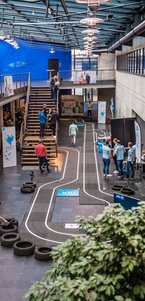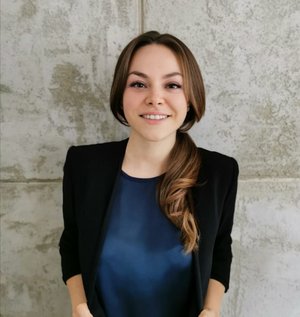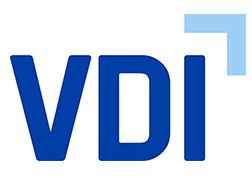5. VDI ADC 2025 @ ELIV
The last VDI Autonomous Driving Challenge took place as part of the renowned ELIV Conference
Location: World Conference Center Bonn
Date: October 14 - 16, 2025
A look back at what made the event special:
October 14 – Training Day
Get to know the track, test your vehicles in a relaxed setting, and fine-tune everything for the competition.
October 15 – Competition Day + Networking Event + Award Ceremony & Afterparty on the Rhine
Give it your all during the competition, connect with companies at the networking event – and wrap up the day with your fellow teams at the legendary afterparty on the Rhine!
October 16 – Playground + Free Congress Access + Networking
Enjoy exclusive extra test time on the track – perfect for trying out new algorithms and discussing your questions directly with the experts from MdynamiX.
Thank you to MdynamiX and MAHA for sponsoring the VDI Award 2025.
„Get ready for the VDI ADC 2026 — registration will open soon!“
Empowering real talent
The task of the VDI Autonomous Driving Challenge is to built or to modify a model car of scale 1:8 to handle self-driving scenarios that are based on problems in real life as well as on racing events. In this challenge, model cars will autonomously run through a race track that features a pit stop allowing traffic-anlogue maneuvres like parking or taking highway exits.

While this race format provides a brand-new challenge in the field of autonomous-driving competitions, the racing spirit will promote new and innovative solutions. How much can an algoritm push the boundaries of the model car driving through a curve in terms of speed and hitting the optimal apex?
We encourage you to participate in the contest! To compete in the challenge, the cars will have to master:
- Driving autonomously through a racetrack
- Completing a variety of parking tasks
- Communicating with other participants (Connected Driving)
The challenge 2024 as video
The concept of the competition
At the interface between real motorsport, robotics and automation, the VDI Autonomous Driving Challenge gives young engineers the opportunity to acquire scientific and technical skills in a competitive environment, to exchange professional knowledge and to gain new experience - and all this with a lot of team spirit and without any risk for occupants or spectators. Evaluated by an independent jury of experts from science and industry, they also strengthen their self-confidence in their individual creative power.
Automation and electrification of vehicles represent a profound change in social life. For our society and the progress of sustainable technology, it is therefore fundamental to introduce young people to key topics such as these as early as possible, in order to give them the space to approach the technological challenges of the future in a playful way.
The VDI Association of German Engineers has set itself ambitious goals with the Autonomous Driving Challenge. It creates a platform for young people and students, through which social and professional skills can develop and technology is promoted. At the same time, students are given the opportunity to exchange ideas with like-minded people in an international environment and to make initial contacts with associated companies.
About the Challenge
Eligible for participation are teams of two to six members. We encourage you to participate from whatever faculty or country your team is from. Besides to the costs of components and a security deposit of 100 € for the event (that will be refunded after participation), the competition is free of charge. We don‘t necessary require having a supervising professor, but we encourage getting support from your respective institution.
Division into two classes
The challenge is divided in two main cups. While the idea of the VDI Supercup is providing a nearly unconstrained environment for development, the concept of the VDI Cup is to compare mainly the programming while using a predefined platform that is equal for every team. Ready-to-use car kits are available for the Cup and Supercup, please contact us. Refer to the Technical and Sporting Regulations of the VDI ADC for more details.
VDI Supercup
VDI Cup
- Most components can be freely selected
- Constrains apply on size and appearance
- Programming, laptime and hardware choices contribute to score
- Hardware platform is predefined
- Programming makes the difference
- Only programming and results contribute to the score
What exactly are the tasks?
Static Challenges
The teams will have the opportunity to demonstrate concepts and ideas used in the model car to the jury. The concept will be judged in three categories:
- Software concept
- Component choice and hardware concept (VDI Supercup-specific)
- Design and sensor integration
Dynamic Challenges
- Racing – All disciplines are inspired by the thrill of real-life motorsport. We believe that motorsport can push new develpoments, as the competition between the teams poses an incentive to improve. In lap record, teams will have try to reach the fastest lap time while having a limited time on the race track. In time trial the car that manges to perform the most laps in a limited amount of time will win. In individual pursuit, two cars on opposing sides of a small symetric track will try to reach each other
- Parking – The task lies in finding a parking space, performing the parking maneuver as well as exiting while checking for colliding traffic. The task is performed on the pitlane of the racetrack.
- Connected Drive - All disciplines will be initiated by a wi-fi signal from the race management
Rules and evaluation

The evaluation of most dynamic disciplines is based on objective criteria like lap times. In disciplines like parking the jury uses subjective measures like the aesthetic of the maneuver as well.
Refer to the regulations for further details on performance evaluation. There, you will find everything you need to know about the rules, the disciplines technical details of the track. The regulations are subject to change, as further questions from teams arise.
Get in touch
Coordination and Planning

"Do you need help with the registration or are there any other questions left? Do not hesitate to contact me. I am looking forward to meeting you", Kristina
If you have any questions, feel free to contact Kristina Wolf. She is supporting all organizational matters concearning the VDI Autonomous Driving Challenge around Prof. Dr. Peter Pfeffer, deputy chairman of the VDI District Munich Association of Munich, Upper and Lower Bavaria and Prof. Markus Krug, HS Munich.
You would like tot get in touch? Just drop a mail to adc(at)vdi-sued.de
About VDI - The Association of German Engineers
VDI - The Association of German Engineers, is a German technical and scientific association. With 135,000 engineers as members, the VDI is the largest technical and scientific association in Europe.
The VDI District Association of Munich, Upper and Lower Bavaria
The VDI District Association of Munich, Upper and Lower Bavaria (short: VDI Munich) with its over 10,500 members the link to the VDI members at local level.
With more than 200 events on current technical topics each year the VDI district association Munich offers the local platform for engineers to exchange expert knowledge and experience in personal contact. There are 20 VDI working groups on different topics, as well as five VDI district groups in Upper and Lower Bavaria and three VDI divisions in Austria.
The commitment of the VDI district association with its more than 100 volunteers reflects the entire range of engineering know-how. The district association is also VDI Circle of Friends Italy.
The management and orientation of the VDI District Association is in the hands of the board of directors, which is supported significantly in its implementation by the advisory board of volunteers as well as the office team. In the annual general meetings, the work done and planned is monitored and generally approved.
Here you can find out more about the VDI district association of Munich, Upper and Lower Bavaria


